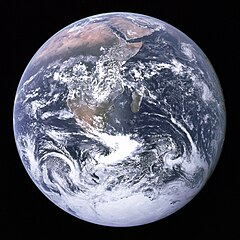Starbirth in The Small Magellanic Cloud

Okay, after all the political excitement, let’s get back to some astronomy!
Here’s an example of something you might learn about in a planetarium. It’s a starbirth region in a neighboring galaxy to the Milky Way. The cloud, called NGC 346, shows up here in multiple wavelengths of light gathered by NASA’s Spitzer Space Telescope (infrared light), the European Southern Observatory’s New Technology Telescope (visible light), and the European Space Agency’s XMM-Newton space telescope (x-ray).
What’s going on here? A phenomenon called “triggered star formation.” It is just like it sounds — star formation triggered by some exterior event. What’s the trigger? You need massive stars that are interacting with their environment. First, they give off huge amounts of radiation, which sends shock waves out through surrounding clouds of gas and dust. Those shock waves shove together clumps of gas and dust, and this creates new stars eventually. This compressed material is the arc-shaped orange-red filament. There are new stars inside the filament, hidden by the clouds of gas and dust that are giving them birth.
The second trigger comes when massive stars die. As they get older, these giants puff out clouds of material. t’s called “mass loss” and seeds nearby space with elements that will become other stars (or maybe even planets). See the pink blob of stars at the upper left. Their formation was triggered by winds from a massive star located to the left of it. It blew up in a supernova explosion 50,000 years ago. Before that cataclysmic event, the star’s winds pushed gas and dust together into new stars. The bubble that star created when it exploded is near the large, white spot with a blue halo at the upper left (this white spot is actually a collection of three stars).
This kind of exploration is fascinating. The more astronomers learn about distant areas of starbirth, the more they can explain about how our own region of the galaxy came to be populated with stars (and planets).
*************
(Note: U.S. citizens — have you registered to vote?)

